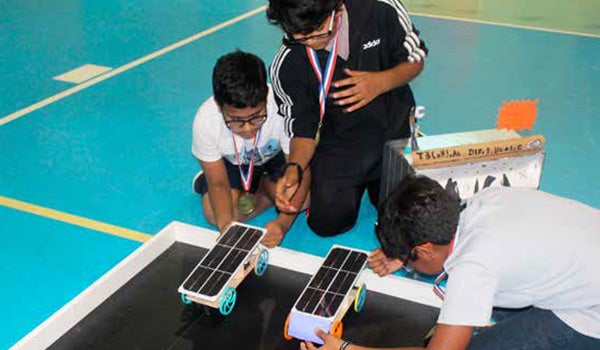Imagine designing and constructing a car that runs on energy harnessed from the sun. Young students were given that opportunity to create and race solar-powered cars with their teammates at the Junior Solar Sprint Competition.
The U.S. Army Educational Outreach Program established the Junior Solar Sprint Competition in 2001 to help students in grades 5–8 develop teamwork and problem-solving abilities, investigate environmental issues and gain hands-on STEM skills.
In this age of technology, the importance of learning STEM continues to increase. Harmony Public Schools promotes STEM projects and competitions to help students at an early age become more proficient in science and technology. Suleyman Gecmenler, Harmony’s Southwest District STEM coordinator, and Yetkin Yildrim, the Rice University School Mathematics Project’s director of STEM projects, are dedicated to promoting these goals at Harmony by establishing the Junior Solar Sprint (JSS) Competition.

Yildrim believes that the JSS Competition has helped students develop academically through project-based learning in science, technology, engineering and mathematics. Thousands of students compete in the JSS every year, and this competition has gained in popularity as solar technology continues to improve.
Harmony Public Schools has been the Army’s strategic outreach partner since 2016 and has recently hosted its annual JSS Competition with 85 competitors from 11 different Harmony campuses. U.S. Congressman Pete Olson ’85 presented at this event, and after observing the huge impact the JSS has on students, he said, “STEM is our future; these are needed jobs, needed fields. What we want to aim for at Harmony and Rice University is that we want to teach these kids early because these kids, the ones attending this competition right now, are going to change our world.”
Students enjoy participating in the JSS because they know that they are gaining many important skills and experiences from it.
“I joined JSS because I really like innovating and creating things, so I thought this would be a good chance for me to prove my talent and interest,” said Bahar Kose, a team member of the first-place team at Harmony’s JSS competition. “The Junior Solar Sprint has provided many students a gateway into the world of STEM and shaped their career interests and passions.”
STEM-based learning also makes students aware of the environmental benefits of using renewable energy resources, particularly solar energy. As students participate in the JSS, they are more inclined to take better care of the natural surroundings through technologies and innovations.
A major part of the JSS competition is to prepare Harmony kids to pursue STEM careers. As Olson emphasized, these students will meet the demands of the STEM workforce and solve main global issues and change the world for the better.
— Anjali Agrawal
Harmony Public Schools

